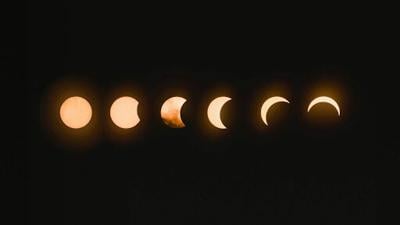False claims about a solar eclipse happening on August 2, 2025, have spread quickly across social media platforms, according to Desert Sun reporting on the viral misinformation. The rumors suggest that a once-in-a-century solar eclipse will make the world go dark for several minutes on Saturday. However, these claims are completely wrong and have no scientific backing.
Neither NASA nor the US Naval Observatory has listed any eclipse for Saturday, August 2. The only darkness people will see on that day is when the sun sets normally in the evening. Desert Sun notes that these false stories have gained millions of views on TikTok and other social media sites, causing confusion among people who believe the misinformation. The real solar eclipse events are scheduled for different dates, with the next partial solar eclipse coming on September 21, 2025, visible only in the Southern Hemisphere, including parts of Australia, New Zealand, and Antarctica.
The confusion likely stems from a real and remarkable solar eclipse that will happen on August 2, 2027, not 2025, as confirmed by the Economic Times coverage of the NASA debunking. This future eclipse will indeed be special, lasting over six minutes and crossing through 11 different countries. The 2027 event will be visible across Europe, North Africa, and the Middle East, making it accessible to millions of people. The Economic Times emphasizes that NASA has clearly stated there is no total solar eclipse scheduled for August 2, 2025.
The agency warns people not to fall for the viral rumors that are spreading false information. The real eclipse in 2027 will be historic because it will provide the longest period of darkness on land during the 21st century. People planning to watch any future solar eclipse should use proper safety equipment, like certified solar viewing glasses that meet international safety standards, to protect their eyes from serious damage.
Read more on Chicago Star:
Chicago’s North Shore: Land of trophy homes and sky-high price tags
Chicago bids farewell to Ryne Sandberg, a legend etched in Cubs history
From pixels to petunias: The viral Roblox game that’s beating the big guns
Two of Frank Lloyd Wright’s earliest works are making real estate headlines
The 2027 eclipse deserves its title as the eclipse of the century because it will bring extraordinary viewing conditions, Space magazine explains in its fact-checking of the false claims. The moon will completely block the sun for up to 6 minutes and 22 seconds, which is much longer than most eclipses. This duration makes it the longest totality on land since 1991 and will remain the longest until 2114.
The path where people can see the total eclipse will be about 160 miles wide and will cover roughly 1.5 million square miles of Earth's surface. Space magazine clarifies that even during this real eclipse, the entire world will not go dark simultaneously, as the eclipse path covers only a small portion of the planet. The eclipse will pass through spectacular locations, including southern Spain, Tunisia, and ancient sites in Egypt like Luxor. For people outside the eclipse path, including those in North America, it will be a normal day with no changes to sunlight. The next solar eclipse of any type will be a partial one on September 21, 2025, visible from the Pacific Ocean region.








(0) comments
Welcome to the discussion.
Log In
Keep it Clean. Please avoid obscene, vulgar, lewd, racist or sexually-oriented language.
PLEASE TURN OFF YOUR CAPS LOCK.
Don't Threaten. Threats of harming another person will not be tolerated.
Be Truthful. Don't knowingly lie about anyone or anything.
Be Nice. No racism, sexism or any sort of -ism that is degrading to another person.
Be Proactive. Use the 'Report' link on each comment to let us know of abusive posts.
Share with Us. We'd love to hear eyewitness accounts, the history behind an article.